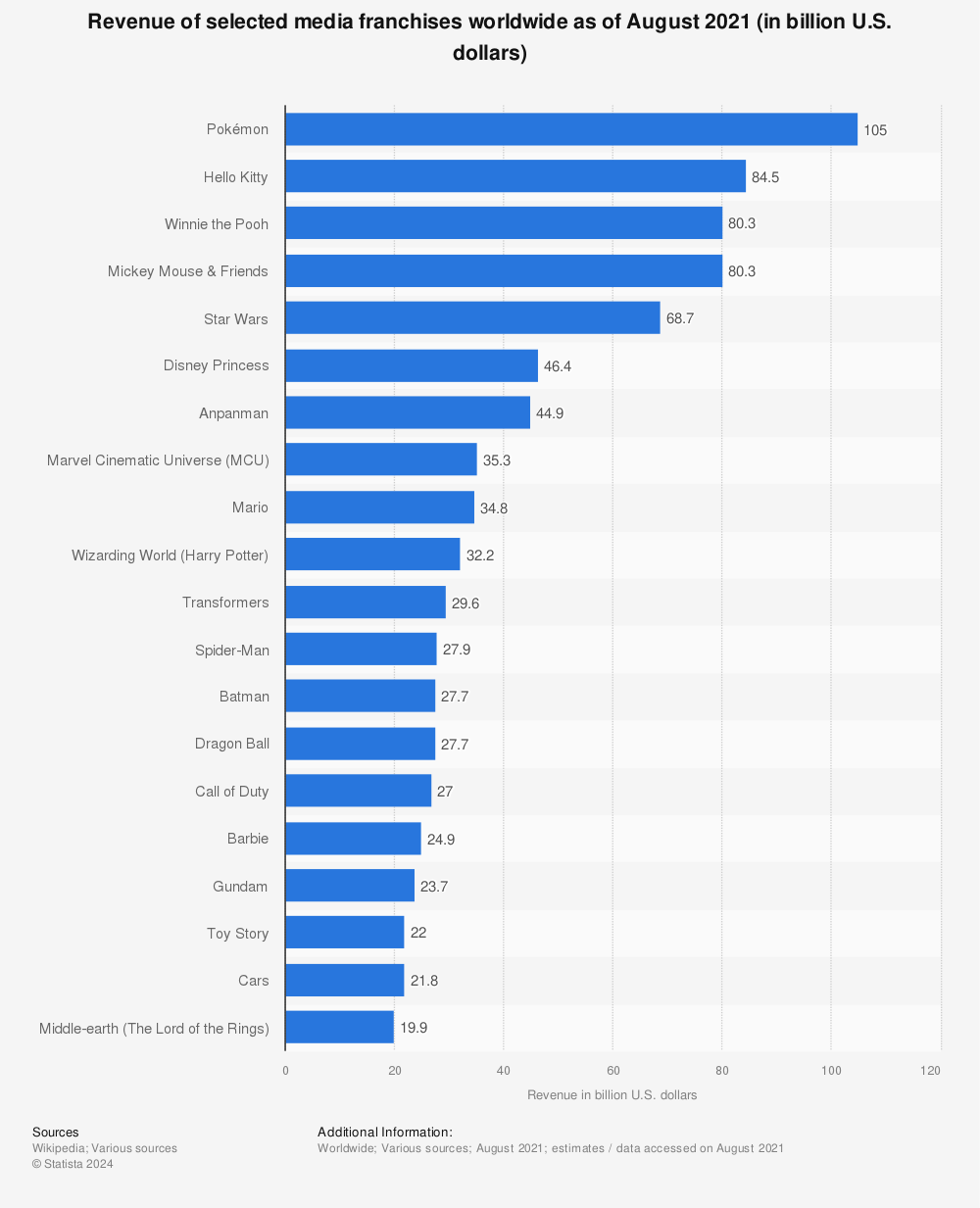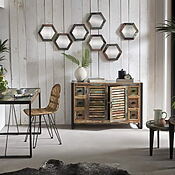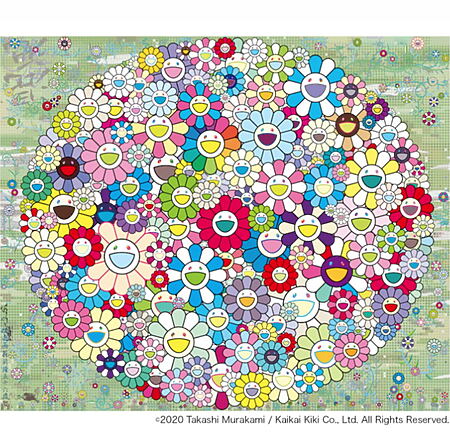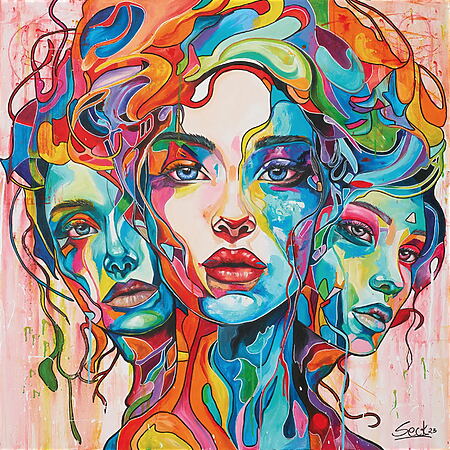Some may consider statesmen or philosophical thinkers to be significant modernities in modernity. But in the world of pop culture, the cute cat figure "Hello Kitty" unchallenged her sunplane as an icon.
Two black dots as eyes, six fine mustache and a colorful loop on their heads: With this minimalist design, the mother of the Cat Content the light of day exactly 50 years ago - on November 1st, 1974.
For the 50th birthday of Hello Kitty, admiration and at the same time amazement manifested when an explosive unveiling is completely surprised by the global fan community.
An imperishable symbol of global pop culture
Since her creation in 1974 by the designer Yuko Shimizu for the Japanese company Sanrio , Hello Kitty developed a fan culture worldwide that extends over generations and has become a synonym for modern fandom .
What started as a simple design on a coin pocket for girls has developed into a global brand that implements billions and inspires adults and children alike.
A look behind the phenomenon "Hello Kitty"
Hello Kitty as a cultural symbol is not just a product of any commercialization. It represents a unique mix of childlike innocence and the Japanese "Kawaii" aesthetics -a cute culture that is intended to convey emotional peace and joy.

Image Source: Museu Paulista, CC BY-SA 4.0, via Wikimedia Commons
This aesthetics have far -reaching social and psychological implications that are expressed in the use of child schemes and minimalist design.
Historical roots and influences
During the pop art movement of the 1960s, Hello Kitty came from the spirit of a visual revolution. Cultural icons such as Andy Warhol and Roy Lichtenstein experimented in the western world with commercial pictures and mass -produced works of art.
Sanrio initially used this aesthetics in her country of birth Japan to make a bridge between consumer society and artistic expression.
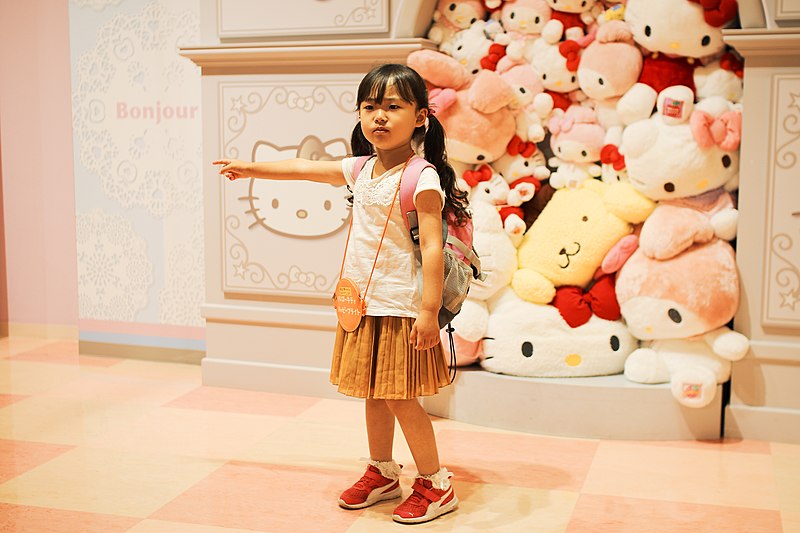
image source: Miki Yoshihito from Sapporo City, Hokkaido, Japan, CC by 2.0, via Wikimedia Commons
The first drawing by Hello Kitty showed the creator Yuko Shimizu according to the BBC on a small coin pocket, sitting, with a milk bottle and a golden fish next to her. Sanrio, which is known for its highly cute characters, wanted to create a figure that would mainly address young girls.

Image source: Sanrio Company History
The name and the story behind it
The name "Hello Kitty" was chosen to ensure international attractiveness. Sanrio wanted an English name for the figure to enlarge their global reach. The basic concept was simple but profound: a little girl with the kindness of a cat who lives in London and experiences little adventures every day.
According to the official biography, Kitty White has her birthday on November 1st and lives with her family - her twin sister Mimmy, her mother Mary and her father George - in a cute house in London. She loves her mother's apple pie and likes to bake cookies herself. Funnily enough, she has a pet herself 😉
Symbolism and P sychological aspects of design
The minimalist features of design, large -scale, black eyes without mouth and a predominantly round shape, are particularly designed for the emotional projection of the viewer.
The lack of a mouth, for example, enables people to transfer their own feelings to the figure, which deepens emotional engagement
The design follows special aesthetic principles that are deeply anchored "Kawaii" The big eyes, the round face and the lack of a mouth are crucial for their emotional versatility.

image source: Miki Yoshihito from Sapporo City, Hokkaido, Japan, CC by 2.0, via Wikimedia Commons
The non -fiction author Andreas Neuenkirchen from Tokyo dealt intensively with the CAT content phenomenon and formulated the secret of success of the sweet cat design of Sanrio as follows "mouthless being" :
Hello Kitty's face is an empty canvas on which everyone should project their own feelings. "
The expansion into the world
At first Hello Kitty's success was mainly limited to Japan. But soon she expanded and entered the international markets - first in the USA , then worldwide .
In the 1980s, the motif experienced a real boom because it was no longer only to be found on small accessories such as donations, diaries and wallets, but also on clothing, dishes and later even technological products such as computers and smartphones.
Stories and collaborations
Hello Kitty has experienced some remarkable collaborations over the years, including partnerships with renowned fashion brands such as Gucci and sporting goods such as Converse . In addition, she appears in exclusive limited edition collections and even has her own themed parks, such as Sanry Puroland in Tama and Harmonyland in Oita, Japan.
The iconic design can be found in many cultural representations, whereby it is often reinterpreted. It was shown in various media and art forms, including painting, sculpture and digital art.

Image source: Manuel C., CC BY-SA 4.0, via Wikimedia Commons
Artists such as Takashi Murakami and Ai Weiwei have integrated the cute kitten motif into their works and thus underlined their conceptual flexibility and deep cultural influence.
International presence and adaptation
The product design has adapted its brand identity to different cultural contexts. In the United States, it is a synonym for child joy and retro nostalgia, while in Asia it is often seen as a symbol of modern feminism and youth culture.

Image source: Taichi, CC BY-SA 3.0, via wikimedia commons
Hello Kitty has helped this ability to adapt and integrate to a wide and diverse supporter around the world.
License brand as a weighty economic factor
The importance that Hello Kitty takes today can be impressively recognized on the basis of the underlying numbers. By August 2021, the Hello Kitty Media Franchise , which is operated by license holder Sanrio, generated a cumulative turnover of USD 84.5 billion worldwide.
This sum consists of merchandise, box office and video games and goes back to 1974. This means that the lovable license brand is only behind Pokémon, which has achieved about 105 billion USD.
Although the share of Hello Kitty in the annual group turnover of 600 million euros in the “character goods” division has shrunk from 70 to around 30 percent in the past ten years, the importance of iconic cat remains immeasurable.
This decline can primarily be explained by the strategic decision of Sanrio to expand the portfolio of characters and thus address a wider audience.
The subsequent infographic of Titlemax.com from 2019 shows a more detailed picture of the largest media franchises ever.
Hello Kitty not only remains a sign of nostalgic childhood memories, but continues to inspire generations with their timeless charm and versatility.
Cultural importance and influence on our lifestyle
Hello Kitty quickly became more than just a cute figure - it became a cultural symbol. Their popularity created its own subculture, in which "Kawaii" not only became an aesthetic principle, but also a lifestyle. This culture was further consolidated by music, fashion and even architecture.
The cute creation was shown in works of art, on catwalks and in high-fashion collections, which makes it a multifunctional symbol that combines cute and high-end culture equally.
Influence on pop culture
Kawaii culture
Hello Kitty is probably the best-known symbol of the Japanese "Kawaii" culture, which celebrates cuteness and innocence. This culture has gained an internationally foot, especially in fashion trends, design and even in social behavior. "Kawaii" became a global phenomenon that appeals not only children but also adults.
In many countries, "Kawaii" a fashionable and cultural statement that is closely associated with the iconic design.
Fashion icon
H Ello Kitty has conquered the fashion world and is just as present in the haute couture as in everyday streetwear . Cooperation with renowned designers and brands such as Gucci and Balenciaga have given the figure an aura of luxury and exclusivity.
Many fashion labels have integrated the minimalist design into their collections, making it a symbol of fashionable song.
Artistic influences
Artistic cooperation
Hello Kitty numerous artists as a muse to create their own creative works. These range from modern artists such as Takashi Murakami , who has integrated their aesthetics into his psychedelic creations, to installations and sculptures in museums and galleries worldwide.
The motive has managed to blur the border between high and pop culture and to offer a platform for cultural and artistic discussion.
Pop art and modern art
In the tradition of pop art, which was founded by icons like Andy Warhol, Hello Kitty beaten a bridge between art and mass culture. It was often shown in works of art that focus on commercial and everyday objects, and thus continued the philosophy of pop art.
Economic effects
Merchandising and licensing
Hello Kitty is one of the most productive characters in the history of merchandising . It can be found on a variety of products, from school materials and household goods to jewelry, electronics and even cars.
This far -reaching merchandising has not only created considerable economic value for the Sanrio company, but also influenced many other industries.

Image Source: Javier Mediavilla Ezquibela, CC BY 2.5, via Wikimedia Commons
Tourism and leisure industry
Theme parks , such as Sanrio Puroland in Japan and the Hello Kitty leisure park in China, are popular tourist attractions and have attracted many fans from all over the world. These parks offer immersive experiences that enable visitors to immerse yourself in the world of Hello Kitty and their friends, and thus have significant economic effects on the local tourism industries.

Image Source: LN9267, CC BY-SA 4.0, via Wikimedia Commons
Social and psychological effects
Feeling of nostalgia
For many people, the cute cat figure is a symbol of childhood and innocence. Their simple but lovable appearance has caused nostalgic memories to many supporters. This feeling of nostalgia has a significant influence on pop culture and the way brands and products use nostalgic compounds in order to build deeper bonds into their consumers.
Influence on personal identity
Hello Kitty has helped many people to communicate their identity through fashionable or decorative forms of expression. There are countless stories of fans who use their connection to the figure to articulate their personality, be it through clothing, accessories, nail designs or even tattoos.

Image Source: Directine 2 4, CC BY-SA 3.0, via Wikimedia Commons
The kitten design serves as a universal symbol that also expresses individuality and community.
Influence on gender roles and identity
Over the years, Hello Kitty stimulated discussions about gender roles and identity At a time when traditional gender roles are increasingly questioned, the design is an iconic example of how something as simple as a cute figure can stimulate complex social and cultural discussions.
They made their androgynous design and the lack of conventional gender characteristics accessible and made it possible to accept broad acceptance in various cultural contexts.
Fun facts about Hello Kitty
- Name: The full name of the figure is "Kitty White" . She was born on November 1st and lives in an idealized version of London.
- Family: Kitty White has a twin sister named Mimmy White, which differs optically only by a yellow loop in the hair.
- Profession and hobbies: Kitty loves baking cookies and looks forward to becoming a great pastry champion one day.
- Merchandising: Hello Kitty's influence ranges from everyday objects such as notebooks and pencils to aircraft and themed parks.

Image Source: Aeroprints.com, CC BY-SA 3.0, via Wikimedia Commons
Personalized experiences and digital integration
Online presence and social media
The cute kitten is also prominently represented in the digital world, with a strong presence on social media platforms and in online communities. This digital integration has made it possible for the figure to connect with new generations of fans and to keep the brand dynamically and relevant.
Interactive experiences
The future of the Hello Kitty brand also includes interactive and personalized experiences through technology. Augmented Reality (AR) and Virtual Reality (VR) offer new opportunities to experience the world of Hello Kitty.
These technologies create immersive environments in which fans can interact with their favorite character in an innovative way.
The spectacular revelation for the 50th birthday
At first glance, even after half a century, there is no need to scratch the harmless and at the same time lovable figure. But the recent statements of the Sanrio company put the fans into turmoil:
Hello Kitty is not a cat! "
Rather, she is a small English schoolgirl named Kitty White, who goes to the third class and lives in the suburbs of London (the editorial network Germany an "eternal third grader" in her article )
This unveiling, apparently out of nowhere, not only surprised the loyal fans, but also brought a wave of amazement.
Why this is brought to light remains questionable, but it should fuel curiosity and deeper interest in the brand.
Permanent impression
Hello Kitty touched the hearts and heads of millions of people in half a century. Whether she is seen as a cat or as a little schoolgirl remains irrelevant.
What matters is the feeling of solidarity and joy, which she inspires with her constant presence and fascinating evolution.
FAQ: Frequently asked questions about Hello Kitty
Question: Is Hello Kitty really not a cat?
Answer: Yes, according to the company Sanrio, the cute figure is actually a little girl named Kitty White.
Question: Who invented Hello Kitty?
Answer: The original character design was designed by the Japanese designer Yuko Shimizu for the Sanrio company and published for the first time in 1974.
Question: Why does Hello Kitty have no mouth?
Answer: The lack of a mouth enables people to project their own feelings onto the figure, which deepens emotional engagement.
Question: How old is Hello Kitty?
Answer: Kitty White, how the figure was baptized by Sanrio, was born on November 1, 1974 and thus celebrates her 50th anniversary.
Question: Where does Hello Kitty live?
Answer: In fiction, the figure lives in London, which explains her western clothes and your environment.
Question: What are some of the most remarkable products or cooperations with Hello Kitty?
Answer: Hello Kitty has made it to a variety of products as a design, from aircraft and themed parks to exclusive luxury cooperation.
Question: What is the meaning of Hello Kitty in the art world?
Answer: The iconic character design has inspired artists like Takashi Murakami and Ai Weiwei and is presented in various art movements and media, which underlines their cultural influence and versatility.
Final thoughts
Hello Kitty has completed an incredible cultural journey in her almost fifty -year existence. From a cute figure on a coin pocket to a global symbol of pop culture, fashion, art and society, it has influenced and inspired numerous cultures.
Your ability to adapt to different cultural contexts and your universal attraction make you a timeless icon. Hello Kitty is a lively example of how art and commerce can merge in a wonderful way in order to create something that has existed over generations.
The kitten - oh sardon, ... girl - remains a symbol of joy, creativity and culture. Her impressive journey shows how a simple but well thought -out figure can have in -depth cultural effects worldwide.
Whether in art, fashion, as a cultural symbol or as an identity expression - Hello Kitty has left a unique and indelible trace in our world.

Owner and Managing Director of Kunstplaza. Publicist, editor, and passionate blogger in the field of art, design, and creativity since 2011. Successful completion of a degree in web design as part of a university program (2008). Further development of creativity techniques through courses in free drawing, expressive painting, and theater/acting. Profound knowledge of the art market through many years of journalistic research and numerous collaborations with actors/institutions from art and culture.

